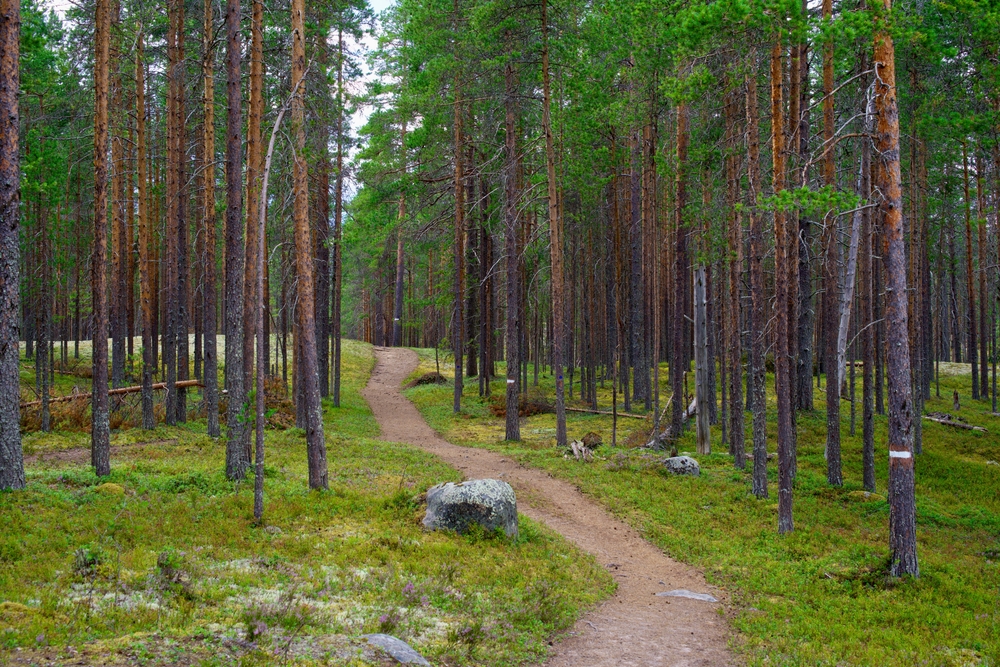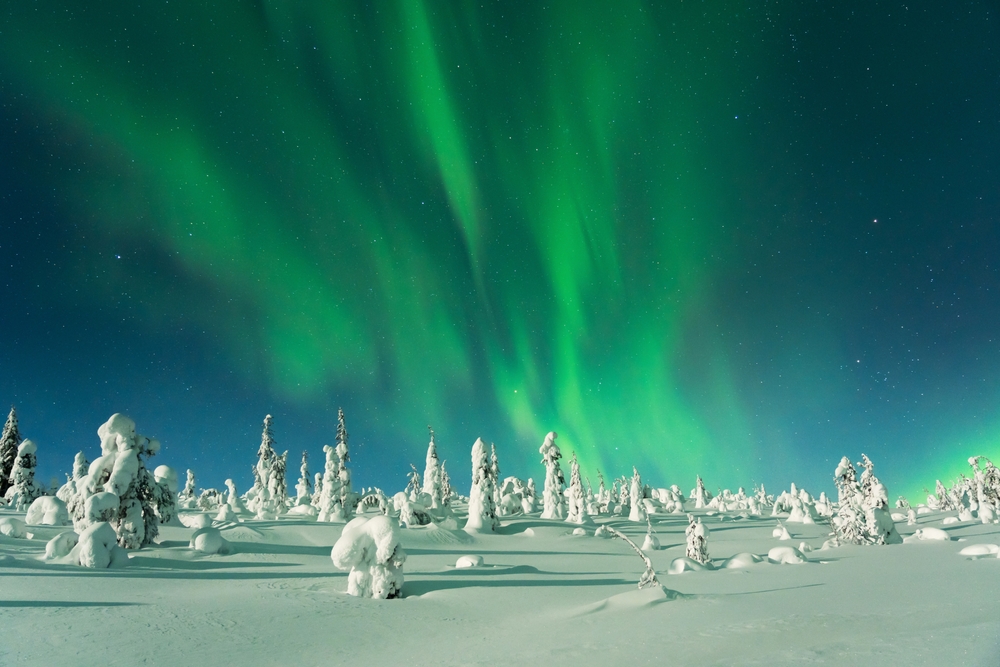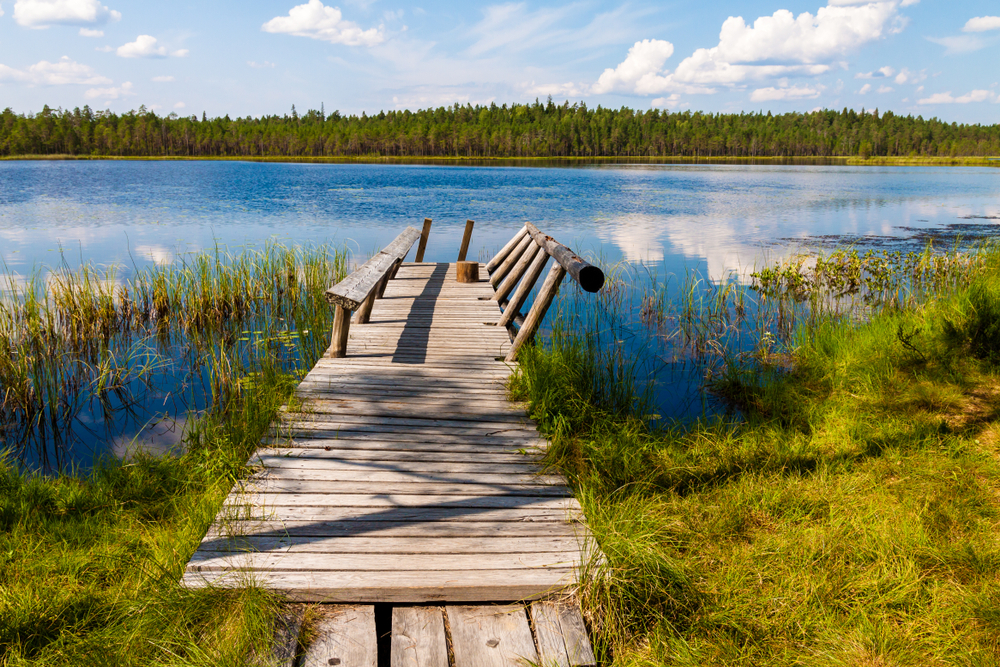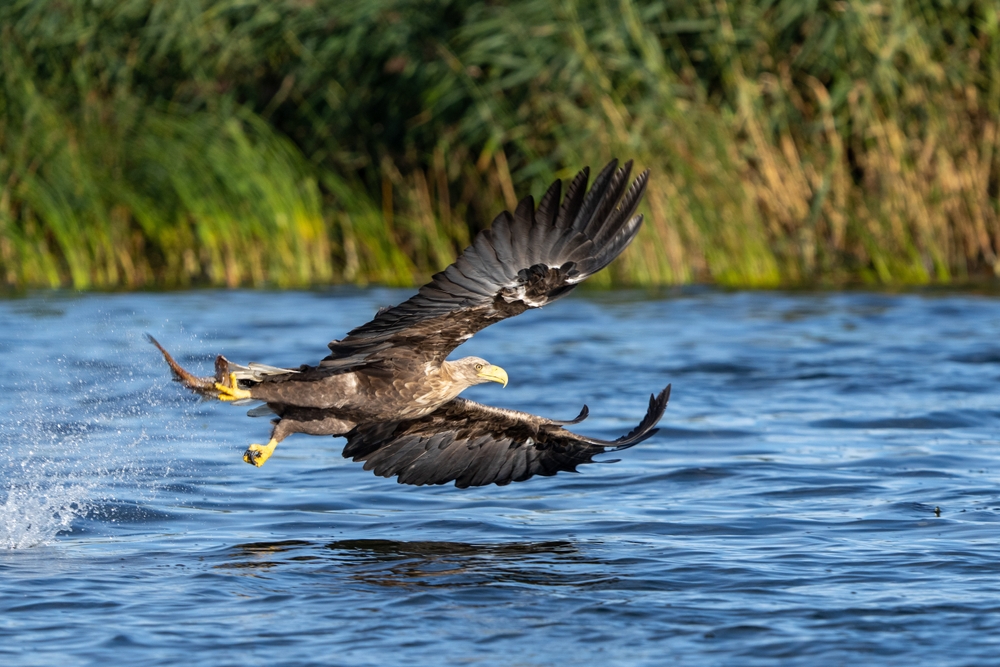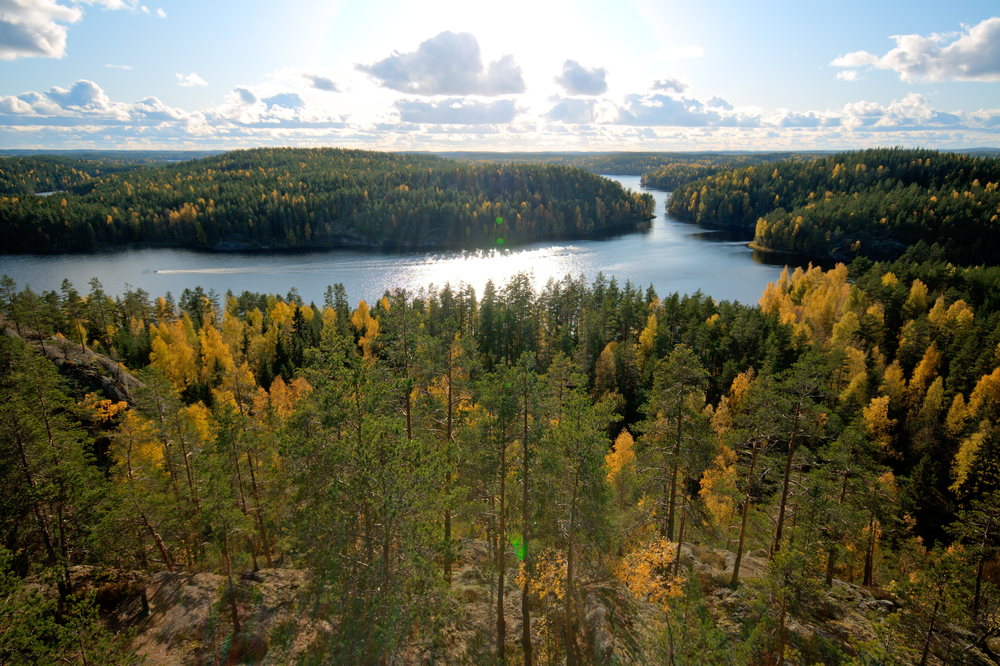Rokua Overview
Rokua National Park, known as Rokuan kansallispuisto in Finnish, is a unique natural reserve in northern Finland, covering an area of approximately 19 square miles (50 square kilometers). Situated in the regions of North Ostrobothnia and Kainuu, the park is part of the larger Rokua Geopark, a UNESCO Global Geopark.
This landscape was heavily shaped by the last Ice Age, creating a mesmerizing terrain of eskers, kettle holes, and ancient sand dunes. These glacial formations give Rokua its distinctive topography, with rolling ridges and depressions scattered throughout.
The park is also home to clear kettle lakes, such as Ahvero, which reflect the sky in their pristine waters. The vegetation here is primarily dominated by boreal pine forests, along with lichen-covered ground that gives certain areas an otherworldly, white-tinted appearance. The terrain is relatively dry, though there are pockets of wetlands and small bogs where mosses and shrubs thrive.
The wildlife of Rokua National Park is adapted to the boreal conditions, making it an excellent place for spotting a range of northern European species. Among the most notable mammals in the park are the Eurasian red squirrel, the European hare, and the elusive moose, which occasionally roam through the forests. Smaller predators such as the European pine marten and red fox can also be found in the area.
Birdwatchers will find Rokua particularly rewarding, as the park is home to species like the black woodpecker, capercaillie, and the Eurasian eagle-owl. Waterfowl such as the whooper swan—Finland’s national bird—can often be seen in and around the park’s lakes.
A popular destination for outdoor enthusiasts, Rokua National Park is well known for its extensive hiking trails that allow visitors to explore the region’s glacial landscapes. The Rokuanvaara Ridge is a favorite hiking spot, offering panoramic views of the surrounding forests and lakes. In the winter, the park transforms into a snowy wonderland, drawing in cross-country skiers who traverse its well-maintained ski trails.
Another unique feature of the park is its geological significance, which is highlighted through information boards and interpretive trails that educate visitors about the area’s Ice Age history. For those looking for a more immersive experience, camping and wilderness huts provide an opportunity to stay overnight within the serene, remote setting.
Conservation efforts in Rokua National Park focus on preserving its delicate lichen-covered forest floors and maintaining its unique glacial landforms. Erosion caused by foot traffic is a concern, and visitors are encouraged to stay on marked trails to minimize impact.
The park is also part of the broader Rokua Geopark, which works to promote sustainable tourism and environmental education. Over the years, conservationists have successfully protected the region’s fragile ecosystems while making it an accessible and educational destination. The balance between tourism and preservation has been carefully managed, ensuring that Rokua remains an unspoiled retreat for generations to come.








































































